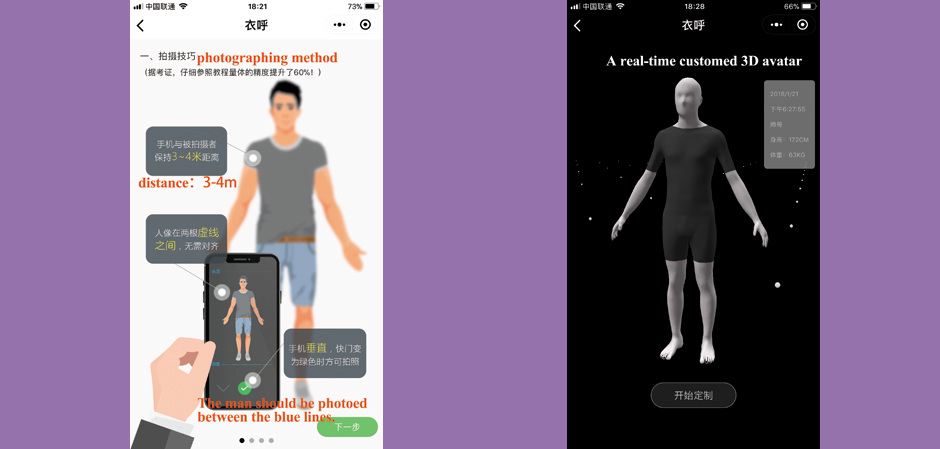Digital technologies in fashion design: expectations VS reality
part 1 part 2 ; part 3 part 4
DIGITAL DOUBLES OF FIGURES
To design a three-dimensional silhouette form of clothing in VR, you need a digital double of a human figure, or an individual, or a typical one with the same anthropomorphic features. And there are serious problems here. The transition to three-dimensional clothing design required knowledge of the coordinates of already many points on the surfaces of several objects oriented relative to each other in space, a virtual figure and clothing in the form of a three-dimensional shell assembled from flat parts.
Currently, the following variants of digital doubles are used, which differ in the complexity of obtaining:
- an avatar, which is a digital copy of a real figure (usually of an atypical physique) after scanning a person in full height;
- avatar, which is a digital copy of a conventional figure of a typical physique.
Thanks to body scanning technologies and other solutions, it is easy to generate a digital double of a real figure (avatar) in modern gadgets
and demonstrate to the surprised consumer himself, as well as in basic types of clothing in VR. The figure shows a fragment of a Chinese program for digitizing a consumer's figure using a conventional smartphone and obtaining an outwardly similar digital double.

But what about the typical figures for which sewing enterprises work and the main features of which are given either in industry standards or in those regulations that large manufacturers develop for themselves by attracting special companies, in particular ALVANON? Such figures in real practice represent industrial mannequins. To get an avatar of a typical figure, you need to have impressive anthropometric information.
Alas, there is no digital database of anthropometric features of the population in our country, which cannot be said about other countries with a digital economy. For example, in France, the Anthropometric Reference standard National Measurement Campaign 2006 (EN-H005 for men and EN-F006 for women) was developed using body scanning technology. And in China, mass measurements have recently been completed.
Available foreign software (Clo3D, Vidya, MakeHuman, Optitex) does not allow generating exact copies of digital doubles of Russian figures for a number of reasons. Firstly, the Russian typology, published in 2004, is insufficient to obtain digital doubles: there are very few projection dimensional features that are not necessary for the correct setting of the avatar in three-dimensional space (without these features, the avatar may turn out to be stooped or, conversely, too straightened). Secondly, the number and content of dimensional features have not changed in our country for a long time, and this despite the fact that the assortment and functions of clothing have significantly expanded. Compare the indicators of previously existing and introduced standards:
- typical figures of men OST 17-325-86 – 58 signs (17 projection);
- TSNIISHP, 2005, – 48 signs (11 projection);
- typical figures of women OST 17-326-81 – 62 signs (19 projection);
- TSNIISHP, 2003, – 51 signs (12 projection).
New digital technologies require other forms of presentation of human figures. Bypast linear dimensional features, information is needed about the weight of figures of different ages (for example, already now most online stores request their weight from buyers who are not sophisticated in dimensional anthropometry in order to ensure the proportionality of clothing and reduce its returns), the distribution of fat deposits.
Look at a fragment from the French standard EN-F006, illustrating the age-related changes in female figures. With such graphic information, any professional designer or fashion designer will be able to see and take into account morphological features and create the desired fashionable image with the help of design techniques or visual illusions (see figure).

And the very form of representation of a typical figure in the form of a set of linear dimensional features only for the basic anthropometric static pose, leading its history from the dimensional tables of the XVII century, has long been insufficient to understand the plasticity and morphology of figures.
To be continued.
< span style="font-size: 12px;">Photo: expert and from open sources